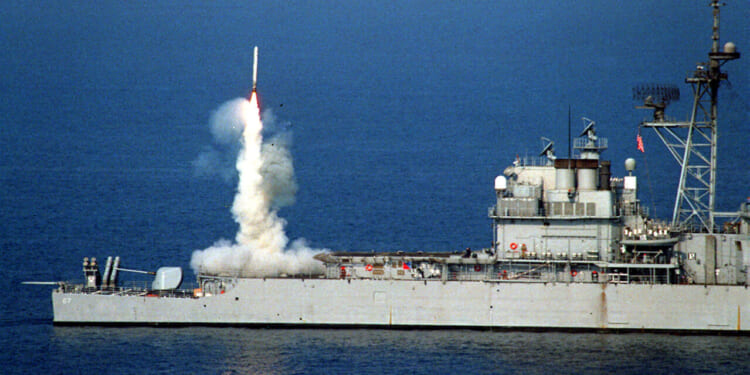The Maritime Strike Tomahawk will make up the majority of the Navy’s surface and submarine anti-surface missile arsenal.
The Navy continues to invest in the latest version of the anti-ship Tomahawk cruise missile.
In September, the Navy awarded Raytheon Technologies an $80 million contract for the continued technological development of the munition.
The Maritime Strike Tomahawk
The Tomahawk is not a new weapon system. Variants of the cruise missile have been in service with the US military since the 1980s. The latest version, Block V, includes an anti-ship capability. The Navy named this variant the Maritime Strike Tomahawk.
The Maritime Strike Tomahawk is a brand-new weapon system. The munition achieved early operational capability only in the last quarter of Fiscal Year 2025. It is only in use with some surface combatants and will not achieve initial operational capability until 2027 and full-rate production until the end of the decade.
The Pentagon is investing a lot in the Maritime Strike Tomahawk as the missile will make up the majority of the Navy’s surface and submarine anti-surface missile arsenal. The contract modification awarded to Raytheon authorizes the procurement of hardware and software to facilitate the qualification of the missile’s seeker component.
“This modification adds scope to support the continued development and qualification of seeker processor hardware and integration assets for the Maritime Strike Tomahawk (MST) program,” the Department of Defense stated in the contract award.
Designing and developing a munition like the Maritime Strike Tomahawk is a vibrant, interactive process that often leads to several updates on the design of the weapon system and its subordinate hardware and software. Test fires give the Navy and the defense company involved in the contract valuable data to adjust the development process as necessary before production begins.
The Tomahawk missile is an interservice weapon in use by the Navy and Army (with the Marine Corps transferring its arsenal to the Army after it shut down its long-range missile units in 2024). The Air Force and Space Force are the only services not operating the weapon system.
To be sure, the Navy has other anti-ship munitions in service or under development, such as the Harpoon anti-ship missile and the Long Range Anti-Ship Missile (LRASM), which has an air-launched and surface-launched capability. Of course, Navy warships can carry several different anti-ship munitions. However, uniformity makes logistics easier.
Putting the Tomahawk into Action
In a potential conflict with China in the Indo-Pacific over Taiwan or the South China Sea, naval and air operations would be at the forefront.
The area of operations is designed in a way that promotes naval and air forces over large distances of water. The campaign against Imperial Japan in World War II, for example, was fought mainly on the seas and in the air. Without controlling the sea and air battlespaces, the US military would not have been able to proceed with its island-hopping campaign that brought it to the doorstep of Japan in August 1945.
Similarly, a potential conflict with China would, at least in the first phases of the war, take place on the seas and airspace surrounding Taiwan and the South China Sea. These conditions would be ideal for the Maritime Strike Tomahawk, which has an unclassified range of approximately 1,000 miles, to show its capabilities.
About the Author: Stavros Atlamazoglou
Stavros Atlamazoglou is a seasoned defense journalist specializing in special operations and a Hellenic Army veteran (national service with the 575th Marine Battalion and Army HQ). He holds a BA from the Johns Hopkins University and an MA from the Johns Hopkins’ School of Advanced International Studies (SAIS). His work has been featured in Business Insider, Sandboxx, and SOFREP.
Image: DVIDS.


















